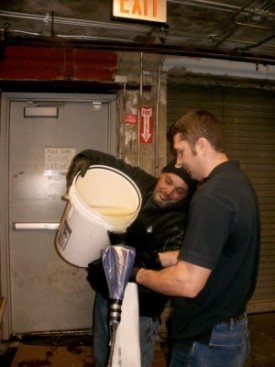Thinking Outside the Box


Boston University Facilities Management and Planning (FMP) is striving to adopt more innovative and efficient methods to maintain buildings and grounds. During the recent winter break, when students returned home and buildings were relatively vacant (on the Charles River Campus), the Plumbing Shop employed an unconventional method to fix a long-standing pipe problem in the IT Help Center.
After dealing with constant stoppages due to a 30-year-old pipe in the main drain of 533 Commonwealth Ave for almost three years, plumbing manager Bill Murray elected use trenchless technology to fix the pipe. “We are a university, we are all about learning. We are looking to keep maintenance up to date with the latest and industry best practices,” says Murray.
Trenchless rehabilitation is a non-traditional method that allows pipes to be repaired without extensive excavating. This method is called trenchless because it only requires openings to be made at two ends, rather than the entire length of the pipe. Repairing the pipe in the conventional manner would have required excavation of 80 feet of floor, building containment walls to protect the area around the site, and replacing the carpet and paint in the impacted area upon completion of the project. Less digging means less disruption to students, faculty and staff as well as quicker repairs and lower costs.
To ensure success, and because the IT Help Center is a high-traffic area, Murray tested this method on a roof drain at the warehouse in 808 Commonwealth Ave prior to trying it with a sanitary drain. The test worked and Murray was able to make the repair without damaging a very expensive mural on the wall concealing the pipe.
The particular technique used by FMP is known as cured-in-place piping, which works by creating a new, seamless pipe within the existing damaged structure. The first step in this process is feeding a video camera through the existing pipe in order to assess the damage. Next, a hollow liner filled with an epoxy/resin mixture is inserted into the pipe. Once in place, the liner is inflated and left for 24 hours so the mixture can harden. Once dry, the liner is removed leaving a new resin pipe in its place.
FMP reduced the overall repair costs by half as a result of using this alternative method. In addition, the project was completed in only four days while it may have taken several weeks using conventional methods. Another benefit, according to industry leaders, is that this method is a more sustainable option because of the reduction of carbon emissions when compared to digging. Murray says that he plans to use this method where possible to address future pipeline breaks of a similar nature.